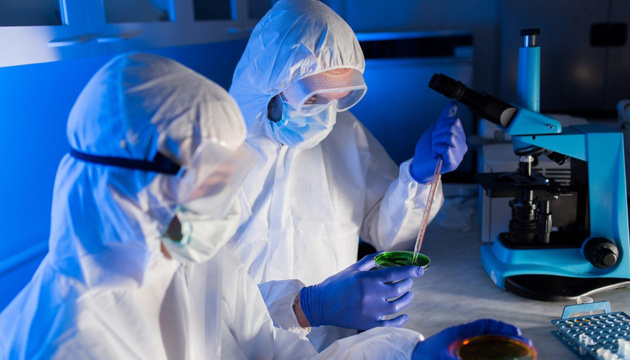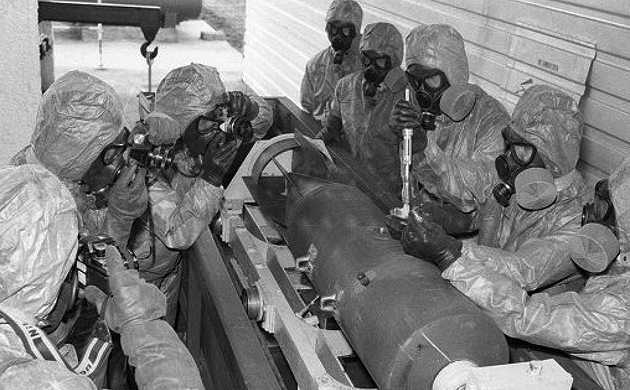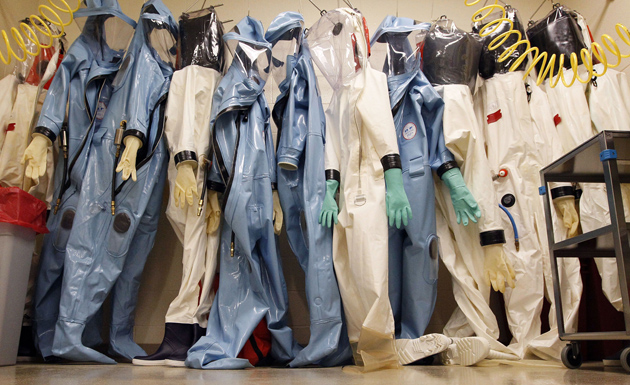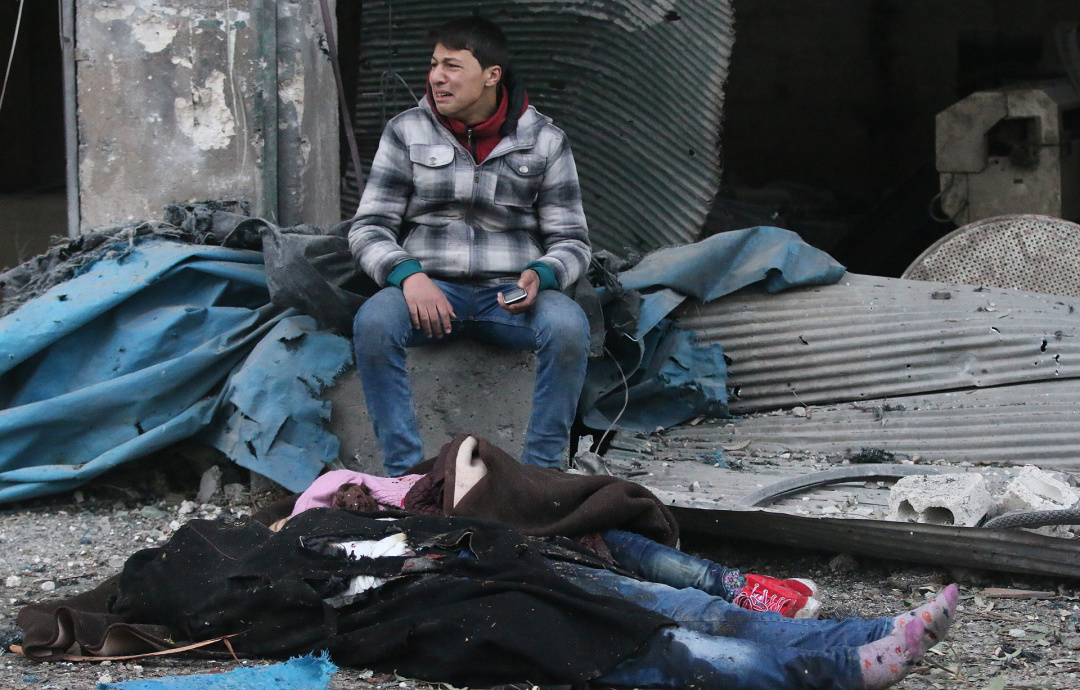
Russian biological warfare capabilities are world-threatening
Rapid spread of Covid-19 coronavirus worldwide has made many countries think about mounting defenses against dangerous diseases. This issue looks even more relevant especially considering that in the world there is one country, which inherited from the Soviet Union a huge arsenal of biological armaments along with a concept of offensive biological warfare. Currently, there is all evidence that the Russian Federation is ready to resort to any means it deems necessary to prove it has sufficient power to make the world play by its rules. Biological weapons occupy a special place in this policy.
AMERICANS ARE ALREADY SCARED…
Washington Examiner published, in late February, a story titled "Coronavirus, super-plagues, and why we need nuclear deterrence against biological warfare." The author discusses potential global effects from the spreading of the relatively benign Covid-19 virus and the consequences of Russia's possible use of any of the types of bioweapons left behind to the current Russian regime by Soviet biological warfare programs. The story gives evidence that "the Russians had developed 'super-plague' that would be non-virulent in its stored form, but could easily be converted into a deadly antibiotic-resistant form when needed for weaponization." What's interesting, the methodology developed 30 years ago allows for the transformation to take place in a small bioreactor on the weapon itself. The author says he is confidently led to believe that Russian President Vladimir Putin has supervised Russia's expanded development of biological weapons, in total breach of the Biological and Toxin Weapons Convention, which requires states parties not to develop or acquire biological agents for use as weapons of war. These efforts are prioritized around designing boutique weapons, which can overwhelm countermeasure treatments. Based on a review of the poisoning of Skripals with a Novichok nerve agent in Salisbury, England, which ended up killing an innocent English woman, the author resumes that Putin can use these weapons, because he has no fear of retaliation. Considering the growing threat from biological weapons, the author suggests that the United States should articulate a new deterrent posture against biological attacks, and this should involve a presidential statement that any bioweapons attack will justify a nuclear counterstrike.
THE DEVASTATING LEGACY OF THE SOVIET BIOLOGICAL WARFARE PROGRAM
It is worth noting that the fears of the Americans and of other representatives of the civilized world are well justified. Not only did Russia inherit from the USSR the world's largest arsenal of biological weapons, but also all classified databanks on biological warfare program outputs, engineering documentation and manuals providing guidance in biological weapons deployment. Tens of thousands of scientists, researchers, doctors, engineers, technicians, and military personnel were involved in this effort, and currently in Russia there are hundreds of covert laboratories, testing facilities and production centers that complement the capabilities it uses to bring back to life the Soviet concept of biological warfare. While the Russian Federation agreed to destroy its existing stockpiles of biological weapons in the early 1990s, it was more likely simply because Moscow realized that the biological agents eligible for scrapping should better be destroyed with US or British money, and it would be able, when needed, to quickly produce fresh tons of biological agents, including bacteria and toxins for use in weapons. Because Russia has all needed to do this...
Research yet conducted into the Soviet biological warfare program has proven evidence that the Soviet Union was systematically preparing for offensive biological warfare by setting up a powerful network of scientific research institutions and testing and production centers involved in the non-stop process of improving the existing and developing new biological weapons products and technology.

This is a consensus reached by most of researchers into the topic. Thus, for example, Harvard University Press (Cambridge, Massachusetts) has published a book titled "The Soviet Biological Weapons Program: A History" authored by Milton Leitenberg, Raymond A. Zilinskas, and Jens H. Kuhn. The authors contend that the Soviet Union had aggressively pursued the development of biological weapons in breach of its obligations under international agreements, with a view of using the weapons in case of any direct armed confrontation with the United States.
The Soviet Union signed up the Biological and Toxin Weapons Convention in 1975. But not only it didn't terminate its biological weapons program, but in fact, expanded and stepped it up further. In support of this effort, Biopreparat, a major R&D and production complex (POB A-1063) was established in 1973. In addition to civilian medications and vaccines, it researched and produced pathogenic weapons for use in a major war. Biopreparat was a system of 18 research institutes, production centers, and military facilities that continued bioweapons research and development at least through the 1990s. Milton Leitenberg, in media interviews, described Biopreparat as a huge project that continued growing after a relevant decision by Soviet Communist Party Central Committee in the early 1970s.
The Soviet bioweapons program didn't involve Biopreparat alone. There were many more other research laboratories and factories for producing biological weapons, which were under the authority of the Soviet ministries for defense, agriculture and health. What is more, bioweapons research, development and production programs were pursued also by Glavmicrobioprom, which reported directly to the USSR Council of Ministers and incorporated over four dozen research institutions and manufacturing companies employing a combined workforce of tens of thousands of scientists and technicians.
A 1999 book by Ken Alibek and Steven Handelman, titled "Biohazard," purports to expose the former Soviet Union’s extensive covert biowarfare programs that had produced dozens of weaponized strains of viruses such as anthrax, Ebola, Marburg virus, plague, Q fever, Junin virus, glanders, tularemia, and brucellosis among many more other virulent diseases. The programs explored, among other things, the weaponization of a variety of viruses, including HIV, the precursor of AIDS. (This, by the way, invites the assumption that Russian successors of Soviet biowarfare freaks could not leave without attention the "fit" properties of Covid-19 coronavirus…).

The authors of the book assert that despite the severe economic disturbances in the Soviet Union and the declared peaceful nature of Gorbachev’s international policy of “new thinking", Soviet authorities had spent an equivalent of $1 billion on bioweapons programs.
Russian chemical weapons researcher L.A. Fedorov, in his book "Soviet Biological Weapons: History, Ecology, Politics" provides more evidence for the already well-substantiated conclusion that the Soviet Union had created the world's hugest potential for offensive biological warfare, even that there was no need for this to be done as the Soviet Union faced no threat of a bioweapons attack being launched against it by a foreign state. That being said, the Soviet people had never been warned that their country was making preparations for offensive biological warfare, nor were they made aware of the implications of these preparations for their health. Further asking the question "What's next?", the author answers: "Considering the current state of affairs in Russia ... until the authorities provide at least a minimum required amount of information to the public, there can be no expectation of a safe future for Russia as far as biological weapons are concerned ..." I would add for myself that Russian biowarfare capabilities endanger the safety of not just Russia itself but the entire world.
BIOLOGICAL WEAPONS OF HYBRID WAR
The Russian Federation, considering its chosen focus on the tactics of hybrid warfare, tries to apply the same tactics to the concept of weapons of mass destruction, which, in probable thinking of strategic planners in the Kremlin, has been too early thrown into the dump of history. A review of Russian guideline documents, college curricula, programs, and other thoughtful information suggests that the Russian Federation has made great advances in the development of new biological agents, and it has gone much further than thought earlier. The Russian military establishment is looking at nuclear, biological, and chemical (NBC) weapons not as weapons of mass destruction, as the Soviet Union did, but, rather, as a means that can be used locally for achieving certain military-political goals and for creating conditions necessary for winning tactical victories in low- to medium-intensity and hybrid conflicts.
In particular, Russia's new military doctrine accepts the possibility of limited use of nuclear weapons at the tactical and operational levels, and of chemical and biological weapons alike. The purpose of this is not to inflict critical damage on enemy forces and infrastructure, but to produce a strong psychological effect on enemy personnel and thus suppress their will to resist, or to cause attrition of enemy men and materiel.
As suggested by discussions held in online forums by Russian military college students, there has recently been a gradual priority shift within the NBC triad. While previously nuclear element was the most important element of the triad, followed by chemical and biological elements, it is the biological element that has replaced the nuclear one to become Number One in the NBC triad. This shift is seen from curricula and programs for NBC officer’s schools in Russia, where the number of training hours corresponds to this order of priority.
This shift in priority can be linked among others to capabilities for monitoring the use of such weapons and for detecting and reporting such events (especially under international law obligations). This is a factor of high significance in the context of hybrid warfare. Events involving the use of biological weapons are hard to detect unless there is free access to the areas of such use. Instead, radioactively contaminated areas are easily detectable, particularly by using remote-sensing techniques. This probably explains why Putin's Russia is especially aggressively pursuing the development of weapons that are difficult to detect both prior to use (thanks to multi-component construction) and post use (thanks to short periods of decay). This is true particularly in the case of chemical weapons, but there is less need to worry about biological weapons that are disguised to be similar to various common infectious diseases.

Photo: AA
Here it's worth noting that experts are pointing to clear signs indicating that Russia is seeking to improve the tactics for deploying chemical and biological weapons. In particular, there are reports of the use of chemical weapons in Syria. Some experts estimate that in Syria, Russian deployed forces are responsible for several dozen attacks with chemical weapons. In such a case their tactics involved the use of those agents that have a short period of disintegration in a locally restricted area with controlled access. These tactics are aimed to prevent such weapons' use from being detected and used for the creation of evidence. It remains possible that Russian forces applied the same tactics to attacks with biological weapons too.
The challenge of detecting and identifying a biological weapons attack is complicated further because the effects from such an attack will likely be clinically indistinguishable from the diseases common to the region of use.
Toxins – poisonous substances produced by some bacteria - can also be used. Toxins can be easily stored, transported and used locally, especially by means of subversion. In such a case, it’s possible to avoid the risk of unchecked post-use proliferation that typically occurs when using other types of biological weapons (bacteria, viruses, and fungi). For that matter, note that the Soviet Union had made great strides in developing toxin weapons, which, along with other biological weapons types, fit very well the Russian concept of hybrid warfare.
EPILOGUE
What to do about this non-virtual threat? The Americans already suggest amending strategic documents to discourage a bioweapons attack against the United States by committing to launch a nuclear counterstrike.
What about Ukraine? What it should do should it be subject to such an attack? The question is far from rhetorical for a country that has for six years now been combating Russian hybrid war, vainly hoping that Putin’s regime will, one fine day, not add biological weapons to its already used arsenal of weapons of hybrid war. This is a big question for the entire World – the world that still does not see how easy it would be for a country, which had breached its obligations under the Budapest Memorandum and provided security assurances for Ukraine in exchange for it abandoning its nuclear arsenal, to do the same in regards to the Biological and Toxin Weapons Convention. Such actions by the Russian Federation can cause people to die from terrible diseases and hence are threatening the very existence of entire humankind. The sooner this is understood the better will it be for this World.
Valerii Riabykh, Defense Express – for Ukrinform




